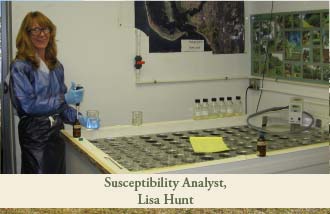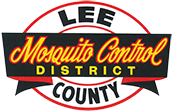Susceptibility Monitoring
Susceptibility bioassays are conducted using established lab mosquito colonies and wild mosquitoes in their larval, pupal, and adult phases to monitor for any indication that wild mosquitoes are developing tolerance to the chemical control measures used. Colonies of fresh-water, Culex quinquefasciatus, and a major pest salt-marsh species, Aedes taeniorhynchus are maintained daily (seven days a week) for the bioassay reference, Field Validation Section, Lee County Public School Science curriculums, and public education. Ten larval susceptibility bioassays and over sixteen pupal emergence trials for field applied SMethoprene were performed in 2008. The “Bottle Bioassay for Adult Mosquitoes” was added to the program this year with six adult bottle bioassays being performed for the active ingredient naled, which is used in the adulticide Dibrom. The susceptibility testing unit added ‘Adult Bottle Bioassay’ testing in 2008. This adds the ability to look for resistance to adulticides in the adult mosquito. The resistance testing unit has incorporated a water chiller into the water bath used for larval bioassays. Cold water temperatures cause mosquito larvae to cease activities (such as feeding) and reduce general metabolic activity. The chiller will allow us to evaluate larval response to pesticides in cold water and to determine the temperature at which pesticides become ineffective.

